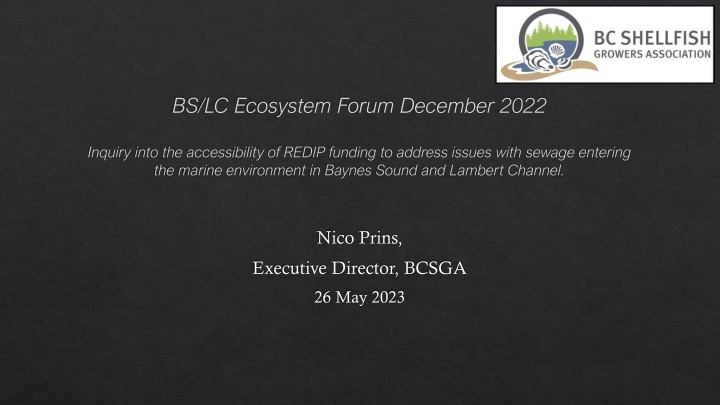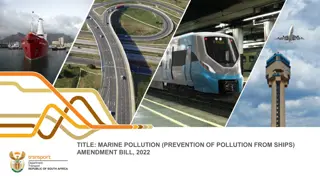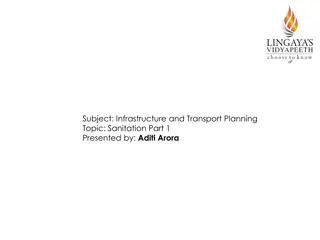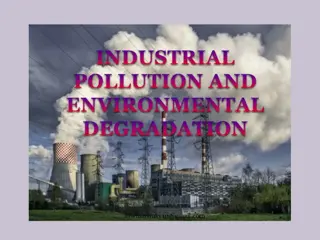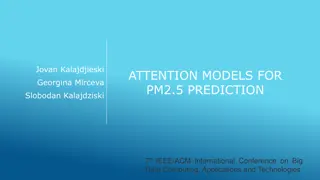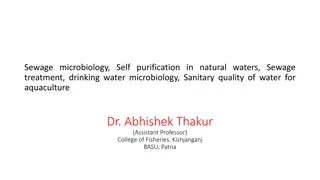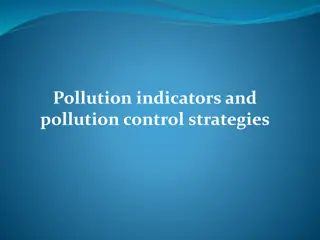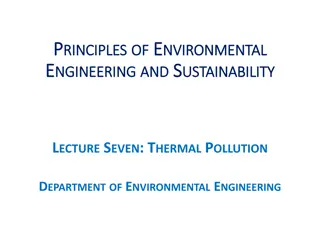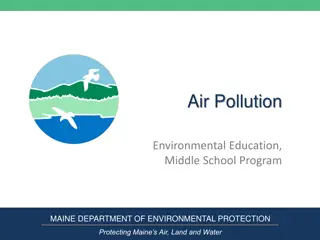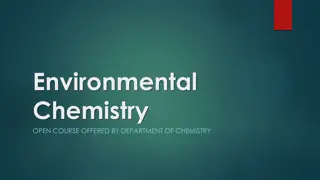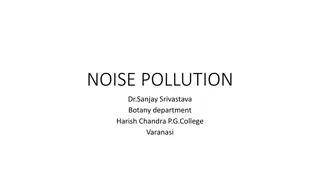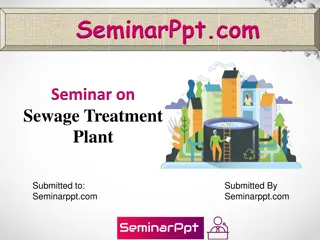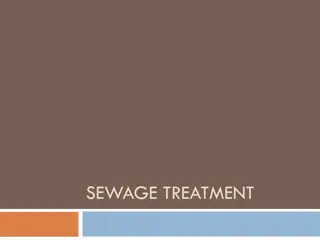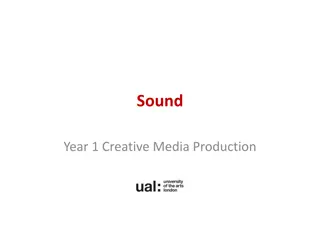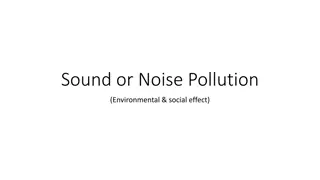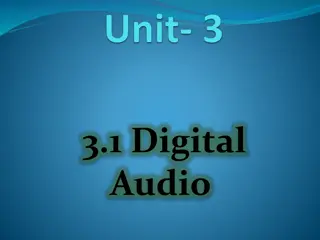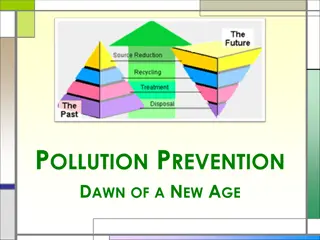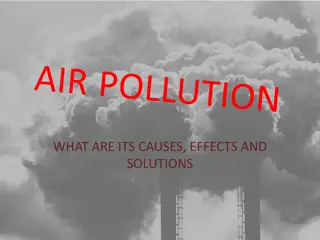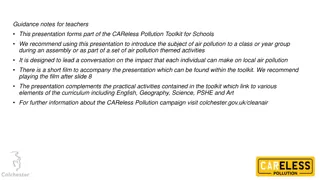Mitigating Sewage Pollution in Baynes Sound
Septic systems near Baynes Sound and Lambert Channel pose a significant risk to the marine environment due to poor maintenance and lack of awareness. The working group aims to support projects addressing sewage contamination in the region through various solutions like mandatory inspections and awareness campaigns. Funding and feasibility studies are also key aspects of this initiative to protect the marine ecosystem from harmful impacts.
Download Presentation

Please find below an Image/Link to download the presentation.
The content on the website is provided AS IS for your information and personal use only. It may not be sold, licensed, or shared on other websites without obtaining consent from the author.If you encounter any issues during the download, it is possible that the publisher has removed the file from their server.
You are allowed to download the files provided on this website for personal or commercial use, subject to the condition that they are used lawfully. All files are the property of their respective owners.
The content on the website is provided AS IS for your information and personal use only. It may not be sold, licensed, or shared on other websites without obtaining consent from the author.
E N D
Presentation Transcript
BS/LC Ecosystem Forum December 2022 Inquiry into the accessibility of REDIP funding to address issues with sewage entering the marine environment in Baynes Sound and Lambert Channel. Nico Prins, Executive Director, BCSGA 26 May 2023
Background: Following the Forum held in December 2022 it was proposed that the BCSGA facilitate a working group to investigate the feasibility of applying to REDIP. Bridget Horel from JEDI and Lesley Chapman from AF gave information session on REDIP December 15th. BCSGA hosted a working group on the 16th attended by DFO. Purpose of Working Group: To develop a summary of actions that could be taken by proponents for mitigating sewage entering the marine environment in the context of Provincial REDIP funding.
Summary of working group: This working group will be available to provide support to any proponents seeking to develop projects aimed at preventing sewage from contaminating the marine ecosystem in the areas of Baynes Sound or Lambert Channel. The REDIP funding seems potentially well suited for the development of large multi-partner projects to improve infrastructure when an additional funding round becomes available the working group will offer support to members of the Ecosystem Forum. The working group will be paused indefinitely until such time that there is an available round of funding, more interest from the forum, or capacity among its stakeholders.
Specific Outcomes: Septic Systems Description of the Problem: Septic systems near foreshore and tributaries leading to Baynes Sound and Lambert channel pose a large risk to the marine environment if not properly maintained. In this region, there is a poor record of septic systems that have been installed and maintained, making it difficult to determine the age and condition of a particular system. Many of these septic systems are past their useful lifetime, which can lead to a range of problems, including system failure and contamination of surrounding soil and water. There is often no enforcement of the required inspections and maintenance by homeowners, which means that systems may not be inspected and maintained as frequently as they should be. In addition, there is a lack of homeowner awareness when it comes to septic systems, which can lead to neglect and a lack of understanding of the importance of proper maintenance. 64% of households in the region have either no records of septic systems or have septic systems that are past their useful lifetime. Septic System Information: 30% no records of sewage systems 30% >40 22% >30 14% >20 18% ~15 18% <10 years 70% Type 1 Systems (annual inspections), 24% Type 2 Systems (~4-5 years per inspection), 6% Type 3 Systems. Solutions: Petitioning health ministry and regional district to implement bylaws Mandatory inspections of septic systems on transfer of property ownership Inspections of homes near foreshore areas and tributaries that are most impactful to the marine environment. Septic inspections in close proximity to key sensitive habitats and economically important areas. Feasibility study on septic bylaws for municipalities (i.e. CVRD, RDN .) Contractor to assess potential sewage pollution impacts in key shellfish growing areas (including freshwater inputs) oDrafting petitions and letters for septic inspections for public health oEducation and outreach for the importance of maintaining septic systems Descriptions of environmental impact of microplastics, disease agents, and endocrine dysregulation on the Marine Ecosystem oSupporting staffing within RDs for bylaw enforcement, etc. Funding support for ongoing roundtable/working group for Baynes Sound water quality and/or human waste impacts to Baynes Sound Vessel Education Description of the Problem: Vessels are discharging untreated human sewage into the waters of Baynes Sound and Lambert Channel. The awareness of requirements, cost of implementation, and enforcement of regulations are currently insufficient to prevent sewage from vessels contaminating the ecosystem. For example, 2018 had strong evidence that outbreaks in the shellfish aquaculture industry were caused by contamination from occupants of a herring vessel. Action Items: Education Pump don t dump education and outreach campaign (https://ecology.wa.gov/Water- Shorelines/Puget-Sound/No-discharge-zone) oDevelopment and implementation of an education and outreach campaign similar to Puget Sound (check out the pump don t dump tab) Signage Pump out app Outreach Social media Etc. Implementation What are the barriers to implementing sewage containment and pump out stations? Enforcement: What is the current enforcement? How effective is it? What is the record keeping? What is the barrier to enforcement? Who is authorized to access a vessel for enforcement and inspections? What probable cause is needed to inspect a holding tank? Boat sticker on outside for in-date septic inspection. Washington seals on vessel waste containment what would the implementation and barriers to a program in BC look like. Action Items Distribute existing education material. Learn about the barriers for vessel owners to comply with existing regulations Learn about the current regulation enforcement and its effectiveness Make Baynes Sound a no dump zone
Specific Outcomes: Washroom access Description of the Problem: Washroom facility access for recreational and industry users of beach areas do not have access to washrooms. Potential solutions Washroom facilities in intertidal aquaculture and wild harvest areas lacks feasibility for the scope and scale of shoreline areas. Buckets and bags for emergency use coupled with increased education and awareness for the responsibility of recreational and industry users. Ecosystem Impacts Description of the Problem: In other regions there are substantial ecosystem impacts and impacts to sensitive keystone species because of contaminants from sewage entering the ocean. There is a large knowledge gap on the impacts in this region. Questions to address: What are the ecosystem impacts specific to the Baynes Sound Lambert Channel area? Whose mandate is in responsible to prevent impacts from microplastics and endocrine disruptors in the marine environment. Review of literature on septic systems on marine health and ecosystems. If relevant, asking for DFO science to consider the impact.
Pilot project application goals: Procure public health communication for state of septic systems and their records near foreshore areas and tributaries, inspections, conditions, rate of inspections, and by-laws. Work with CVRD to mitigate impacts to marine ecosystems and ecosystem services. Conduct research and development of vessel waste contamination regulations and enforcement for the purpose of education and outreach. Fulsome review of literature on the impacts of untreated sewage in the marine environment globally and relevance to cautionary principles in Baynes Sound Lambert Channel. Build jurisdictional map of responsibilities in addressing sewage infrastructure Knowledge gathering relating to items such as (non-functional) pump station at Deep Bay
Simplified Description: Our application to the REDIP aims to address major knowledge gaps in sewage management and its impact on marine ecosystems and ecosystem services in Baynes Sound and Lambert Channel. Assess the state of sewage management in Baynes Sound Lambert Channel. Build jurisdictional map of responsibilities in addressing sewage infrastructure. Build jurisdictional map of responsibilities in regulating sewage discharge. Fulsome review of literature on the impacts of untreated sewage in the marine environment globally and relevance to cautionary principles in Baynes Sound Lambert Channel. Mapping of septic systems and septic infrastructure near shorelines and tributaries. Report on the state of sewage management and its impact on marine ecosystems and industries. Including recommendations with the Baynes Sound Lambert Channel Ecosystem forum for the most effective strategies to mitigate impacts with future projects.
By better understanding the impact and setting priorities to mitigate sewage from entering the environment that the rapid development of communities and aging homes has created. Many homeowners are unaware of their responsibilities to inspect and replace their septic systems, therefore, a key goal is to develop education and outreach material. The human disease agents associated with sewage entering the environment are of great concern to the Shellfish Aquaculture Industry with devastating economic impacts from Norovirus. Additionally, this project aims to work collaboratively with other proponents to develop projects to best prevent sewage entering the marine environment.
Application: Submission date was 5 January 2023 Project Type: Community Assessment Communities served by project: Fanny Bay and Union Bay Project Partners: CVRD, VIU, NIC, Project Watershed Thank You! Milestones: 1.Summary of the literature review on the economic and ecosystem impacts of sewage discharge in sensitive marine habitats. 31-August-2023. 2.Results from the freedom of information request from public health on the records of septic systems in the CVRD. Estimate timeline for FOI is 30-60 business days but expected timeline for communication with public health to take more time. 31-October-2023. 3.We will build upon our relationship with the overlapping First Nation in Baynes Sound including the K mok s First Nation to summarize the impacts of sewage contamination on their traditional marine resources. 31-October-2023 4.Complete mapping of the regulatory responsibilities, framework, inspections, and maintenance being conducted for sewage management in the region. 31- December-2023 5.Report on the sewage management of industrial and recreational vessels in Baynes Sound and policies and framework to prevent sewage dumping in the region. 31-April-2024. 6.Quantify and map the current state of septic systems in Union Bay and Fanny Bay based on the risk, age, and type of septic system being used by each individual homeowner from the records kept by Public Health. 31-August- 2024. 7.Report on the impacts and priorities for mitigating sewage discharge into Baynes Sound. 31-December-2024.
Initial Result: 31 March 2023: REDIP received a large number of applications during the intake period and unfortunately the total funding requested significantly exceeded the Program s available funds. As a result, the Program was not able to provide funding to your project at this time. Next Steps: Work with Rural Policy and Programs Branch to strengthen project/application. Identify additional community infrastructure projects/needs. More support.
Thank you. Questions?
